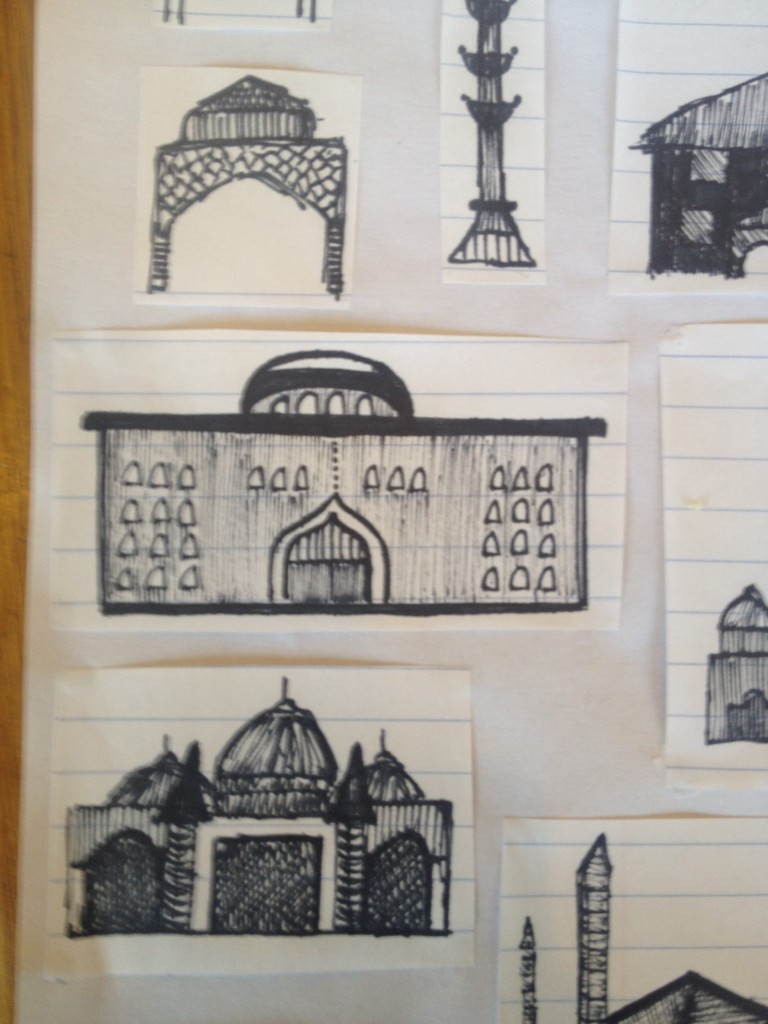
Medium: ink
In their book The Mosque, Frishmann and Khan emphasize the great diversity of Islamic architecture used to create mosques. Although architecture changes over time, the most dramatic differences in mosque architecture are seen in different geographic regions. I have really enjoyed our brief introduction to Islamic architecture.
For my creative response this week, I wanted to draw some of the beautiful architecture thatwe have seen in the slideshows in lecture as well as some other famous structures of Islamic architecture. I used line drawings in plain black in so that the variations in color, size, and background of these different structures is not the focus of the piece. I wanted to draw attention to the diversity of themes in the different structures while unifying them in some way. I chose to keep each picture separate—as opposed to overlapping, collage style—so as not to conceal parts of the some of the structures that I drew. In order to provide contrast between the background of each line drawing and the background of the piece, I drew each structure on lined school paper. I chose this because a mosque is, among many other things, a place of learning. I in part borrowed the sentiment from another Abrahamic religion: I thought of the word shul, which literally means “school” in Yiddish but is used for a Jewish synagogue, because a synagogue is a place of learning. Though some of the structures I drew were simply arches or towers from lecture slideshows, I also depicted renditions of some famous structures. The second row represents (from left to right): the Stockholm Mosque in Sweden, the Taj Mahal in India, the Great Mosque of Xi’an in China, and the Great Mosque of Djenné in Mali. The two large mosques in the bottom row represent the Faisal Mosque in Pakistan (left) and the not-yet-completed Cologne Central Mosque in Germany.
M Frishmann and H. Khan, The Mosque



